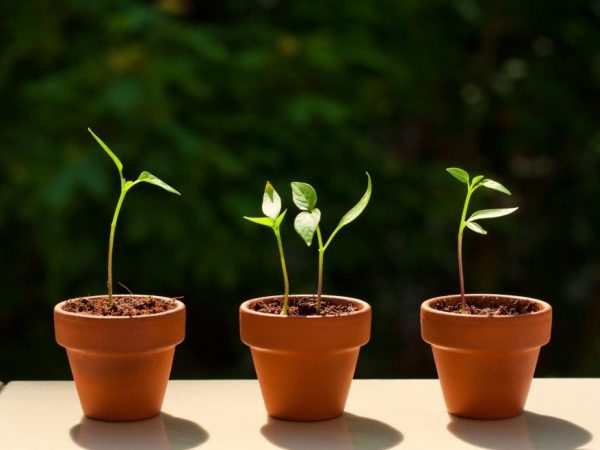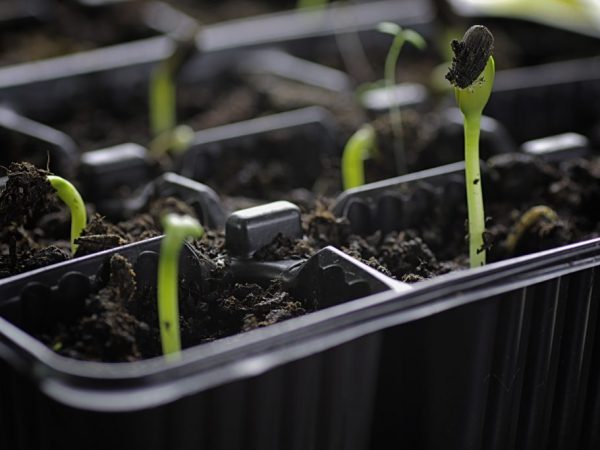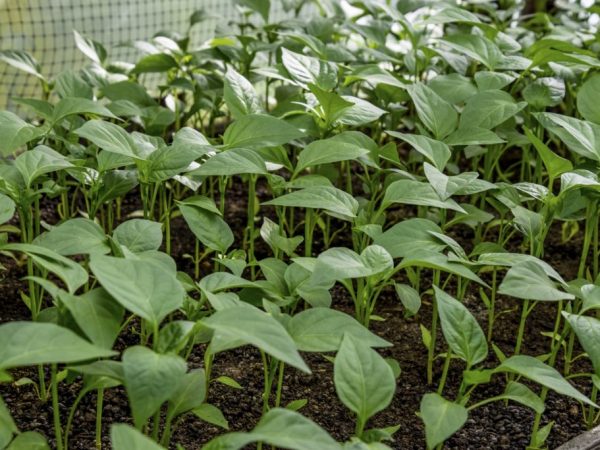Rules for growing pepper at home from seeds
Today, growing pepper at home on a windowsill is far from uncommon. You can enjoy a natural product all year round. Observance of agrotechnical rules will allow you to get a good harvest, which even a beginner can easily master.

Growing pepper at home from seeds
Variety selection
There are no particular differences between the cultivation of different varieties of pepper. There are 3 types of pepper:
- bitter;
- peninsular;
- sweet.
Regardless of the variety, all peppers are demanding in terms of temperature, illumination and watering. The variety should be chosen in accordance with your taste preferences and the purpose of growing. For fresh consumption, you can use only 1 variety. The most popular among the varieties grown on the windowsill are the spicy varieties: Falcon's Beak, Carolina Riper.
Among the sweet varieties, bell pepper is usually preferred. Red and black are not grown in our latitudes. These varieties are cultivated in the tropics, and the product is obtained by drying unripe fruits.
Soil preparation and containers
To grow delicious hot or sweet peppers at home, you need to choose the right soil, flowerpots and take the necessary care.
Growing pepper at home begins with the preparation of a fertile soil composition. You can purchase ready-made soil for nightshades, or you can prepare it yourself. It must meet 3 criteria:
- humidity;
- looseness;
- ease.
Soil suitable for pepper should consist of: sand, soddy-leafy soil and black soil or peat. The components are mixed in proportions of 2: 1: 1. For 10 kg of potting soil, add 1 tbsp. l. wood ash combined with superphosphate fertilizer. The resulting composition should be disinfected by watering with a manganese solution.
Before planting plants at home, it is recommended to fry any soil in the oven to destroy harmful microorganisms and pest larvae. Initially, the seeds are sown in a common pot. In the future, you should not pick up too large containers for planting. Firstly, they will take up too much space, and secondly, the sprouts will develop poorly. The root system of the bush is located in the upper layer of the soil, so the lower one, which is not used, can begin to rot. As a result, all specimens can become infected with a fungal disease that quickly spreads among all seedlings.
Preparing seeds for planting
Growing seeds in a pot requires a careful approach to seed preparation. To begin with, the seeds should be sorted out and soaked in a manganese solution. This process helps to separate empty seeds from full seeds and disinfect them.
In order for the sprouts to appear faster, the seeds are placed in a wet piece of gauze for several days. When the first sprout appears, you can start planting.If you plan to transplant seeds in the open ground in the future, they are planted in February-March. The first pick is carried out after 20 days, when 3 full sheets appear.
Landing

We put them in separate pots
Seeds are planted in pre-prepared containers. Previously, the containers for planting should be washed with laundry soap in warm water or treated with a solution of potassium permanganate. The containers should be filled with soil completely, not reaching the edge of 2 cm. We plant the seeds in increments of 3 cm. Sprinkle with earth on top.
Cover the pots with plastic wrap or containers of a suitable size and set aside in a warm place. When planting several different varieties, they should be marked somehow. The shelter is removed when the first leaves appear.
Seedling care
Caring for pepper seedlings at home involves the implementation of certain agrotechnical measures. In the first 7 days, the formation of the rhizome occurs. The temperature regime during this period should be 14-16 ℃. After that, it should be increased to 25 ℃ in the daytime and 17 ℃ in the dark. Within a month, you can see the appearance of the first true leaves. During the month, watering is carried out 1 time in 7 days and the seedlings are fed (for example, with ash, complex fertilizers for seedlings)
Watering should be strictly limited, otherwise fungus may develop rapidly. It is not recommended to water the plant with cold liquid, it should be at room temperature. If there is not enough moisture, the sprouts will shed their leaves and wither. Pots with seedlings should be placed on the southern windows, otherwise additional lighting will have to be organized. It should be uniform, so you still need to get fluorescent lamps.
Pickling and picking
The formation of the crown allows you to achieve good yields and remove excess sprouts, which only take away the strength from the pepper, but do not affect fruiting. When pinching the pepper, they also pinch the final part of the main root. This allows for the activation of the growth of the lateral roots. This procedure is carried out when 2-3 leaves appear, during transplantation from a common container into separate pots.
Seedlings are carefully pulled out of a common vessel and, holding the stem with two fingers, are transplanted into a previously prepared pot with soil. Beforehand, a deepening of no more than 5 mm should be made in the soil. Place the roots in a depression and gently press the soil around it with your fingers or a spoon. If necessary, add some earth to the pot and water the seedlings.
For a week, the transplanted plants must be placed in a room that is protected from the sun. Too bright light activates the biosynthesis process in the deciduous part, which provokes weakening of the rhizome. After 2 weeks, the first feeding after transplanting can be carried out. For this, you can use wood ash or superphosphates. It is recommended to add to the pot after transplanting not the earth, but the calcined sand.
Hardening

Seedlings love the sun
Caring for pepper seedlings at home also involves hardening the plants. When the heat comes, the plants need to be hardened by the sun's rays and the temperature should be gradually reduced. This will help grow healthy plants. Begin to stay outdoors at one hour. The practice of hardening should be started in the morning hours, when the sun's rays are not so hot and cannot cause significant harm to the deciduous part.
At air temperatures below 12 ℃, hardening must not be carried out. You can open the window, but it is not recommended to leave seedlings in the fresh air, otherwise they will die. The hardening process allows you to get fruits half a month earlier.
Pollination
When growing hot peppers in a pot, there is a risk that the plants may not receive sufficient pollination and the fruits will not develop correctly, so it is recommended to do it yourself.During flowering, shake the bush so that the pollen gets from the upper flowers to the lower ones, or use a cotton swab to transfer the pollen from one flowers to another.
Diseases and pests
Like all nightshades, pepper is a favorite dish for many pests. The most common are:
- aphid;
- spider mite;
- snails;
- Colorado beetle.
Spider mites and aphids can be fought with tobacco infusion, special traps or Fitoverm. Aphids are also fought with special traps, on which sweet syrup is applied. Snails are fought by applying fertilizer from freshly slaked lime or a solution from poultry droppings to the soil. Colorado potato beetle is fought using all known methods. With their insignificant amount, pests are collected by hand. You can prepare a solution from the beetles themselves and spray the leaves of the plants with them, but very carefully so as not to burn them.
When growing a spicy or sweet variety of nightshades in an apartment, most often, the cause of the spread of diseases is improper care or contamination through the soil. Brown spot is characterized by wilting of the lower part of the foliage. Infection occurs through the soil. The fight against such an ailment involves the careful removal of all damaged plants and a change in the soil composition.
Conclusion
You should not plant nearby bushes of hot and sweet peppers, otherwise the second one will also be hot. Over the entire season, fertilizing should be applied 5 times to get a full harvest. Even a person who started breeding plants from scratch can grow nightshades at home.


